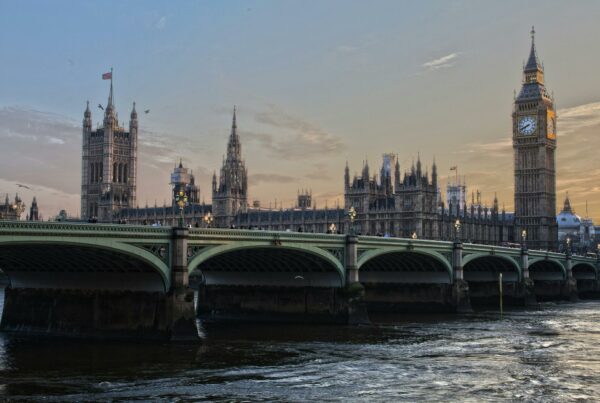 Following on from our previous Budget post, FPC’s Independent Economic Consultant, Peter Stanyer provides a more detailed look at the budget measures announced on Wednesday, with his thoughts on the potential economic implications:
Following on from our previous Budget post, FPC’s Independent Economic Consultant, Peter Stanyer provides a more detailed look at the budget measures announced on Wednesday, with his thoughts on the potential economic implications:
Coronavirus (COVID-19) – The Challenge
Very occasionally governments need to act swiftly, boldly and wisely. The coronavirus pandemic presents such a challenge. Large parts of the global economy are suffering what ought to be a temporary but substantial fall in income as governments try to contain and the manage the spread of the coronavirus. But many parts of the global business community are substantially indebted and rely on regular cash flow to keep their heads above water. Their funding may not stand the shock of an unprecedented interruption to business. Global business needs a giant “bridging loan” to get through what is hopefully only a few tough months.
Rishi Sunak’s budget has two major goals, to overcome this hopefully short term challenge with the minimum possible long term damage to the UK’s economic prospects, and to set the conditions for some improvement in the UK’s generally disappointing prospective productivity record, which is the key to future growth of living standards.
Economic Background
As recently as the start of this year, the global background was reassuringly comfortable, that is before the looming global health threat was recognised. Global growth was expected by economists to be in the region of 3% this year and next, with China and India, continuing to grow much faster (5.5% and 6.5% respectively) than the USA (2%), the Eurozone (1.1%) and the UK (1.0%). The appreciation over recent weeks of the emerging global pandemic has removed this comfortable backcloth.
The draconian steps taken by the Chinese authorities, starting with the lock-down of Wuhan in late January, disrupted Chinese business and with it global supply chains and international trade. In the first three months of the year, demand for oil is expected to have declined by the largest amount in history, and related to this shipping has been exceptionally weak. As so often, it takes time for economists to recognise in their models what everyone can see on their TV screens. For the Chancellor, the particular challenge was the spread in the few days before the budget of strong travel restrictions in Europe as well as Asia of measures to manage the spread of the virus. The independent Office for Budget Responsibility, which prepares the forecasts underlying the budget qualified their own projections (finalised in mid-February) as being over optimistic in the near term because of the growing shock to the global economy of the virus. The travel and other bans, building on the earlier interruptions to China’s manufacturing and purchasing make it likely that the global economy will decline in the first half of 2020. But when societies get used to the virus, presumably later this year, the global economy ought to return to business as normal. But will it?
The financial markets are now signalling that it might not. Stock markets have fallen significantly so far this year, the VIX indicator of stock market volatility is at its highest level since 2008, bond markets are indicating an apparent greatly increased risk of widespread defaults, while 40 year UK government bonds are now offering only 0.5% per year. History would suggest that almost any broad asset class is now cheap in comparison with government bonds and that recent volatility may be little more than a blip on a long chart showing the fluctuations over time in willingness to take stock market risk. But, for almost any business, these are troubling times.
Budget Measures
The Chancellor’s budget included a range of measures to get all types of businesses across the cash-flow chasm that has opened up in their financial projections for the coming months. The success of those measures will be judged by whether the damage to economies is long lasting or temporary, and whether businesses that are judged fundamentally viable are seen to have failed or survived. The Bank of England has brought forward steps to encourage banks to help businesses meet temporary cash flow issues as well as by cutting Bank rate from 0.75% to 0.25%. (The practical importance for business of the cut in Bank Rate is probably that it helps nudge sterling a bit lower, and so makes the environment a bit more competitive for UK firms.)
The budget was originally intended to be a launch pad for the government’s proposals to help improve the productivity of the UK economy. These include raising the minimum and national living wage at a time of full employment and tighter immigration rules, which the Treasury hopes will discourage reliance on unproductive work patterns. But the main theme of the budget was a very substantial increase in government spending, especially on the NHS and also housing and infrastructure, in the next 5 years. With relatively little extra revenue planned, the budget forecasts show a significant increase in the government deficit . Having been 10.2% of GDP in 2009-10, and reduced to 1.8% in 2018-19 the deficit is now forecast to be 2.4% of GDP, or £55bn, in the fiscal year starting this April. In reality it is certain that the knock-on effects of the global pandemic will mean that the deficit will be higher. But for the coming months, the preoccupation and the performance benchmark for this government’s competence will be how well it is judged to have performed in its handling of the NHS and whether its economic strategy is blown off course by the global response to the pandemic. This is the urgent task.





